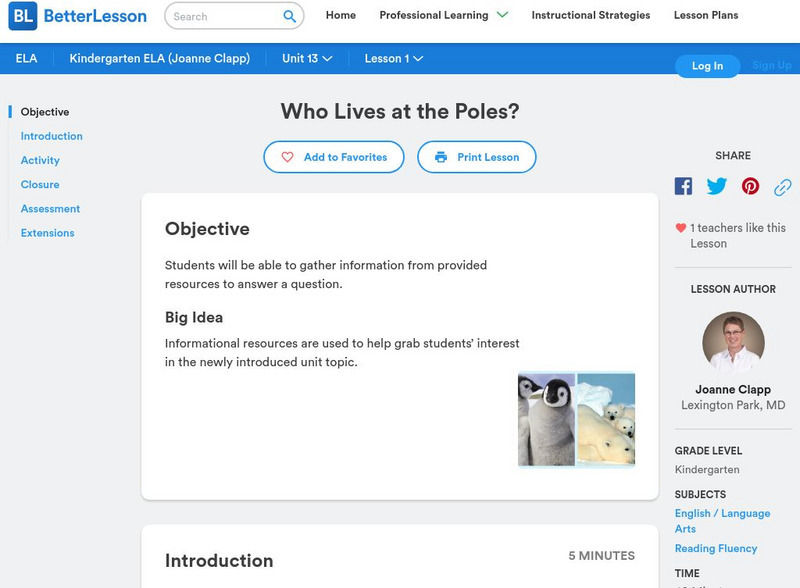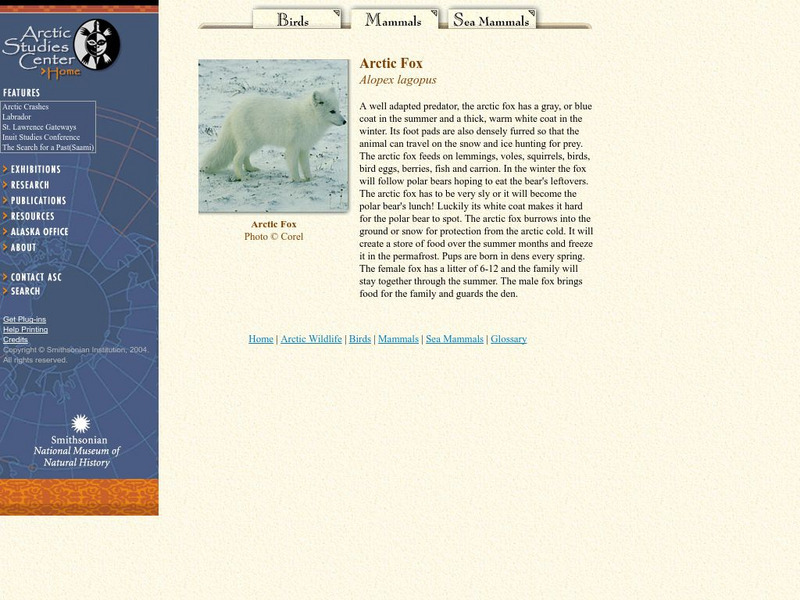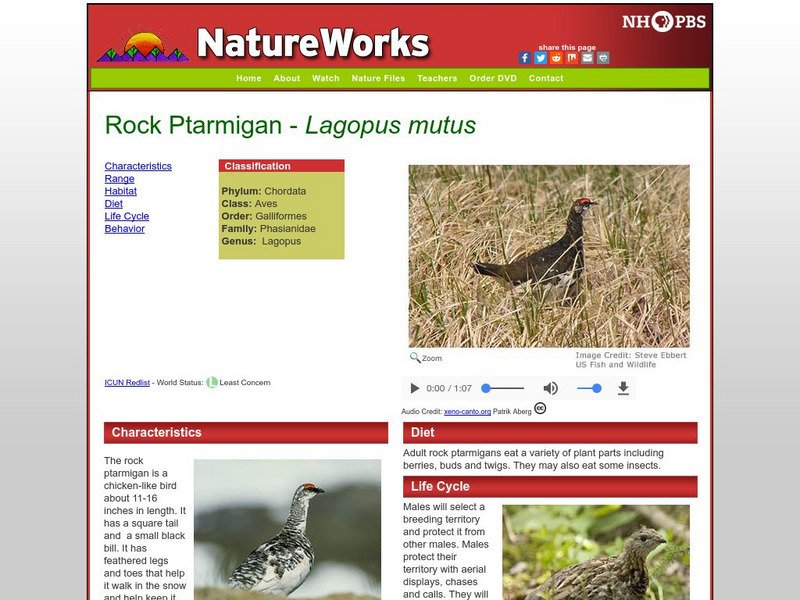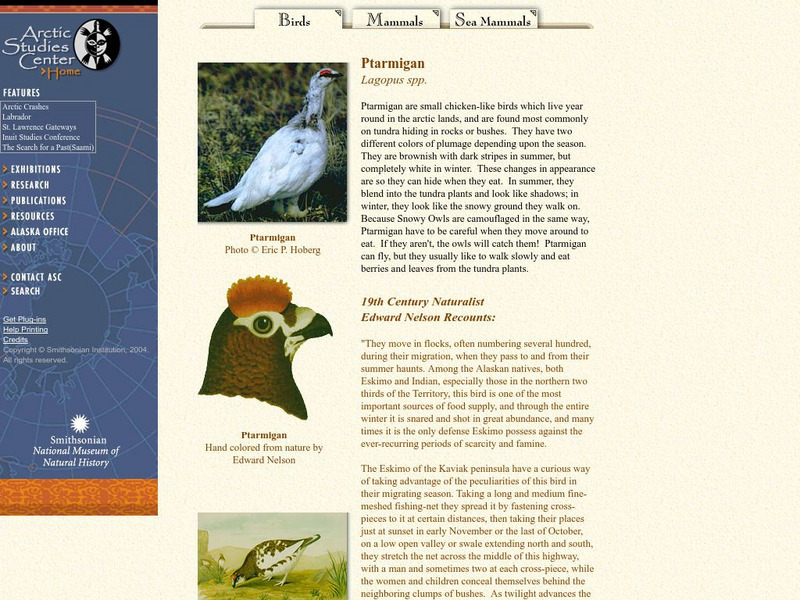PBS
Nh Pbs: Nature Works: Arctic Fox
Learn more about the arctic fox through this clear and concise site. This resource features photos, characteristics, behavior information and more about this fascinating mammal.
University of Waterloo (Canada)
University of Waterloo: Archaeology in Arctic North America
A resource regarding the Arctic region and a look at some of the recent archaeological projects there. The introduction offers a short look at the geography and history of the area.
University of Guelph
Canada's Polar Environments
This site is a set of images along with volumes of information make this site a treasure trove. The site has satellite images.
Other
Scott Polar Research Institute: Polar Bears
Here you can learn about polar bears: where they live, what they eat, and what each part of their body is adapted for.
NOAA
Noaa: Where Will the Polar Bears Go? [Pdf]
Get to know polar bears and learn why it is important for them to live in the current arctic conditions. Make a poster that demonstrates your understanding of how climate change in the arctic could affect polar bears and humans.
Smithsonian Institution
National Museum of Natural History: Wildlife Portfolio
The Smithsonian Arctic Studies Center offers a portfolio of arctic animals. A page dedicated to each animal provides a physical description, personal observations of the animal in the wild, and several pictures.
Exploratorium
Exploratorium: Ice Stories: Dispatches From Polar Scientists: About the Arctic
A brief article featuring the details that make up the Arctic region.
US Navy
The Navy Travels to the Poles
Learn about the exploration of the polar regions by the U.S. Navy. Links to various activities are found on the site.
Science Education Resource Center at Carleton College
Serc: Sea Ice Extension for the Earth as a System Learning Activity
The purpose of this instructional activity is for students to learn how the Earth's systems interact on a global level. They will examine global environmental data and compare this to data on the polar regions. In the process, they will...
Better Lesson
Better Lesson: Who Lives at the Poles?
In this lesson, students will be able to gather information from provided resources to answer a question. Included is a video of the introduction of this lesson, pictures of students' completed work, and examples of books on the subject...
Exploratorium
Exploratorium: Ice Stories: Dispatches From Polar Scientists: Tundra, Permafrost
An article exploring the depths of tundra and permafrost in the Arctic region.
Exploratorium
Exploratorium: Ice Stories: Dispatches From Polar Scientists: Climate Change
An article briefly addressing climate change and its effects in the Arctic region.
University of California
Polar Bear Capital of the World
Churchill, Canada is known for its polar bear population before the bay freezes. Find out all about this incredible visitation every year. Read polar bear facts, lore, rules of bear safety, and wildlife management applied to polar bears.
Smithsonian Institution
National Museum of Natural History: Arctic Studies Center: Arctic Fox
This site takes a brief look at the Arctic Fox, focusing on this animal's adaptations to the harsh climate of its environment.
Smithsonian Institution
National Museum of Natural History: Laysan Albatross
This Smithsonian website has a brief, but thorough, article on the Laysan Albatross that also includes a picture.
Smithsonian Institution
National Museum of Natural History: Tufted Puffin
This Smithsonian website has a brief, but thorough, article on the Tufted Puffin. It also includes pictures and an extensive quote from 19th Century naturalist Edward Nelson.
TED Talks
Ted: Ted Ed: The Arctic vs. the Antarctic
Camille Seaman describes how enterprising people and organisms have found ways to reside around both poles despite the frigid temperatures. [4:24]
Missouri Botanical Garden
Missouri Botanical Garden: Tundra Animals
Explore this comprehensive resource on the birds and mammals of the tundra. This resource features information such as diet, class, order, size, habitat, conservation range and the like.
PBS
Nh Pbs: Nature Works: Rock Ptarmigan
Discover how the Rock Ptarmigan lives in the Tundra when you check out this site. This resource features photographs, information on characteristics, life cycle and more.
Smithsonian Institution
National Museum of Natural History: Ptarmigan
This Smithsonian website has a brief, but thorough, article on the Ptarmigan. It also includes pictures and an extensive quote from 19th Century naturalist Edward Nelson.
Other
Canada and the Circumpolar World
This government resource has information about Canada's policies in the Arctic, and the activities it is involved in to protect and maintain sovereignty over the Canadian Arctic.
Smithsonian Institution
National Museum of Natural History: Muskox
This site takes a very brief look at the muskox as an arctic creature. Several photographs are also provided.
Woods Hole Oceanographic Institution
Woods Hole Oceanography Institute: Comparing the Poles
Have you ever wondered how the Arctic differs from the Antarctic? This resources contrasts the physical features, organisms and human impact of these two regions.
Other
Social History of the North: Circumpolar History Timetables
Find information on 37,000 years of civilization in the far North, including Russia, Northern Europe, and North America. This site is well organized, frequently updated, and offers an extensive bibliography.


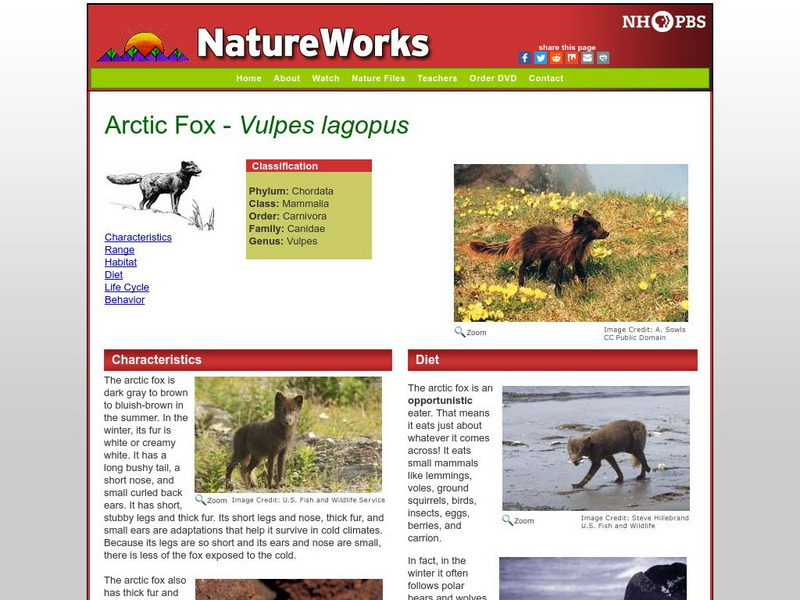



![Noaa: Where Will the Polar Bears Go? [Pdf] Activity Noaa: Where Will the Polar Bears Go? [Pdf] Activity](https://d15y2dacu3jp90.cloudfront.net/images/attachment_defaults/resource/large/FPO-knovation.png)



